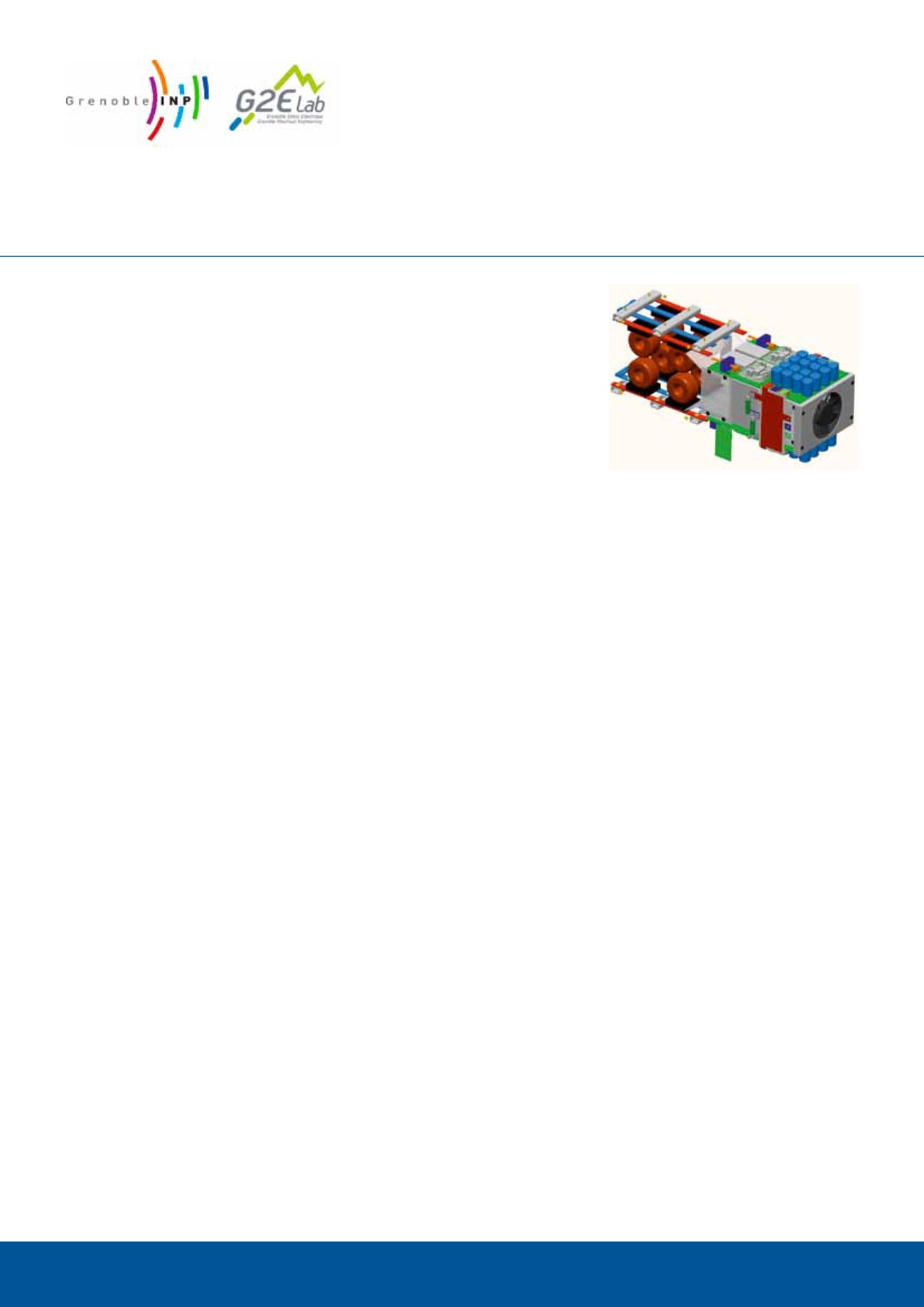
116
Laboratoire G2ELab
The G2ELab is a university Lab, covering
a wide spectrum of expertise in the field
of Electrical Engineering, from material
characterization to system studies. The
research ranges from long term research
up to collaborative research supported by
a strong involvement in partnerships with
large compagnies and SMEs. With more
than 100 permanent staff, 110 PhD and
50 Masters, G2Elab appears as a major
actor both nationally and internationally
in these areas.
Power Electronics Group
While unconventional energy sources and
storage solutions have recently emerged,
power electronics increasingly rises to an
efficient interface between wide-ranging
sources and applications. The diffusion of
the power converters nowadays affects
the majority of industrial and mass con-
sumption domains over a large scale of
power levels.
Our team (17 faculty members, roughly
30 PhD students) has chosen for the last
ten years to focus on ground breaking re-
searches. Those are aiming to improve the
design of the next electrical energy man-
agement systems, both on the technologi-
cal and conceptual level. Therefore, power
integration has become a unifying top-
ic in our team. We are working towards
conceiving and laying the technological
foundations required for our domain’s im-
provement. The team is also pursuing re-
search on modeling tools development to
better answer our design needs for pack-
aging and electromagnetic compatibility.
To reach those goals, three interdepend-
ent topics are investigated:
Research Topics
Integration technologies, both mon-
olithic and hybrid, from the chip to
the converter and its cooling system
The guiding principle of our investigations
is the system integration, while consider-
ing the power converter’s environment.
Four projects are currently under study:
•
Passive components integration: inte-
grated L-C-T structures or multi func-
tional substrates,
•
Active components integration: multi-
ple floating potential devices and asso-
ciated electronic circuitries,
•
Heat transfer and spreading techniques
and their integration within power con-
verters,
•
Assembling and packaging of power
components: interconnects optimiza-
tion and coupled approach between
the power component and its electro-
thermal-mechanical environment.
Modeling and design tools for passive
components and electromagnetic
systems
Power devices electromagnetic modeling
is mandatory as soon as the structure
design is started. This approach guaran-
tees the control over a maximal number
of physical parameters. This modeling is
done with a fine knowledge of compo-
nents within the structures and through
the complete system simulation. Two
projects are developed:
•
Magnetic components modeling (coils
and transformers),
•
Modeling of any electric wiring (printed
circuit boards, thin wires, sheets, busbar).
Power converters design and promo-
tion for unconventional energies and
power grids
The general objective is the design of
switched-mode power supplies. This re-
search is focusing on the increasing num-
bers of criteria imposed on the environ-
ment, in relation with the applications.
Those criteria are divided into two catego-
ries: compatibility with the converter’s en-
vironment, both electrical and/or thermal,
and the volume power density rise as a
consequence of the integration. These re-
searches are mainly applied to unconven-
tional energies (fuel cells, solar cells, unin-
terruptible power supply) such as power
converters for power grids (embedded
power grids for trains and airplanes, elec-
tricity distribution networks).
200 kVA soft switching rectifier/inverter
(Collaboration G2Elab - Schneider-Electric - L2EP)


